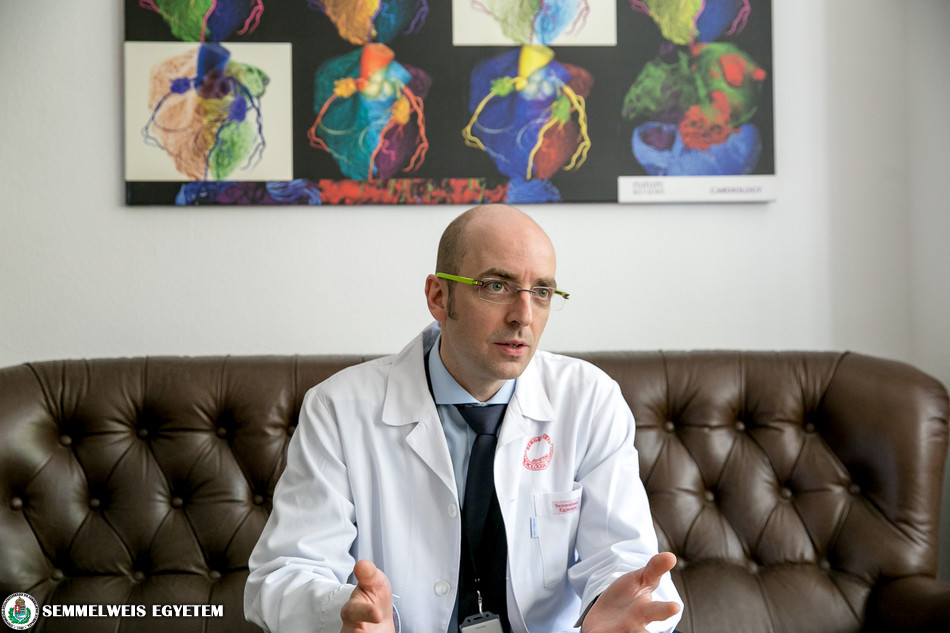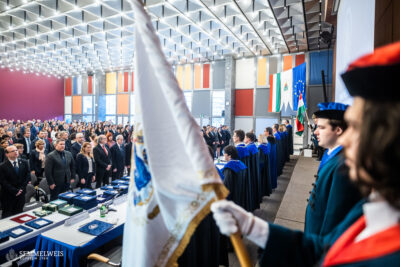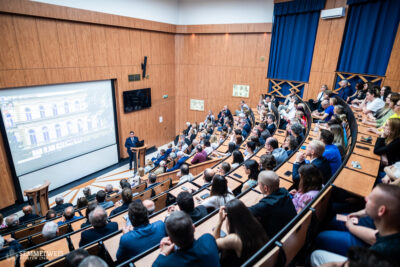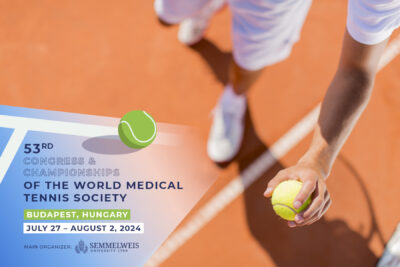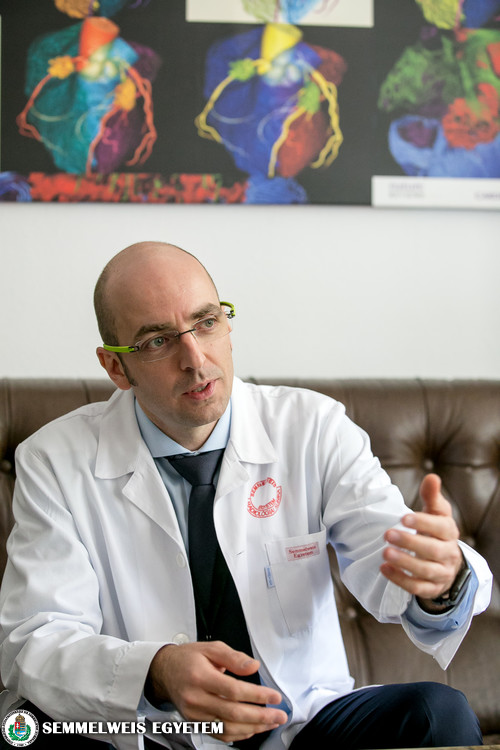 A new organization unit has been created as of September 5 at Semmelweis University called the Department of Medical Imaging, with the merger of the Department of Radiology, the Department of Nuclear Medicine, and the MR Research Center. The department’s name reflects that it covers the entire spectrum of this specific field. As a result of the merger, operations can be optimized, resources better used, the efficiency of patient care can be increased and multidisciplinarity can be emphasized more as a result of closer cooperation between fields, said Dr. Pál Maurovich-Horvat. The new head of the department believes that the biggest strength of a unit comes from its team, its members are what provide its value. This is the approach he followed when leading his research team under the Momentum program, whose results received international recognition within a few years, and this is what he wants to implement at a larger scale in his new position at the department, where there is a highly qualified and enthusiastic community of experts with great potential.
A new organization unit has been created as of September 5 at Semmelweis University called the Department of Medical Imaging, with the merger of the Department of Radiology, the Department of Nuclear Medicine, and the MR Research Center. The department’s name reflects that it covers the entire spectrum of this specific field. As a result of the merger, operations can be optimized, resources better used, the efficiency of patient care can be increased and multidisciplinarity can be emphasized more as a result of closer cooperation between fields, said Dr. Pál Maurovich-Horvat. The new head of the department believes that the biggest strength of a unit comes from its team, its members are what provide its value. This is the approach he followed when leading his research team under the Momentum program, whose results received international recognition within a few years, and this is what he wants to implement at a larger scale in his new position at the department, where there is a highly qualified and enthusiastic community of experts with great potential.
One of the primary goals of Dr. Pál Maurovich-Horvat is increasing research activity, pointing out that with the presence of these three different disciplines, new and exciting research projects can be created. The objectives also include setting up a research center for artificial intelligence. In a related topic, he believes it is important to improve the process of diagnostics and laboratory findings, meaning the introduction of digital, structured, standardized processes, which are indispensable to artificial intelligence (AI) related developments. In the area of medical imaging, the future is in methods built on AI and machine learning, therefore it is important to strengthen the department’s activities in this fast-developing area, he underlined. Contrary to some fears, AI will not “replace” the work of radiologists, but strengthen and support it. The more standardized findings we enter into the system, along with their matching diagnoses, the better we can teach AI to recognize the discrepancies, he explained. As a result, in the future the standardized work will be done by the AI instead of the radiologist, who will thus have more time to deal with the findings that show discrepancies, and consult with patients and clinicians, since imaging is today a central element of patient care. There are hardly any interventions that are not preceded by imaging, which is increasingly precise and sophisticated; we can create 3D images and increasingly also get a picture of some processes thanks to molecular imaging. “This is a very exciting and innovative area, a good choice for graduating medical students, because medical imaging is developing at a fast pace each year,” emphasized Dr. Pál Maurovich-Horvat. He also stressed that thanks to the wide range of data available at the department, researchers can also take part in translational research and data-based developments as cooperating partners.
The Department of Medical Imaging has to become the university’s state-of-the-art diagnostics department, he declared. This of course refers to the area of imaging, not disputing that in diagnostics other fields also play an important role, fields that are pursued at a high level of quality within the university, he noted. The department is currently assessing its machines and equipment to find what kind of further developments are needed in order to fully establish modern imaging capacities.
With regard to patient care, he said that the goal is to get patients from nearby clinics to come to the department and for it to be able to serve them as quickly as possible. He would also like to increase collaboration with related fields, to be supported by creating organ-specific programs such as for example an uro-radiology or a surgery radiology program. Plans also include establishing a cardiovascular profile, as demand for cardiological imaging is set to increase.
As a result of the merger, students will get a more comprehensive picture of imaging in education. With the block-based education introduced as part of the curriculum reform, medical students will learn in their one week at the department about radiology, neuroradiology, as well as nuclear medicine, and in line with the reform, students will also be in closer contact with patients. “We want to provide an experience based on they which they may want to decide to pursue this field,” said Dr. Pál Maurovich-Horvat. As one of his first acts, a new room for TDK and PhD students will soon start being set up.
The director believes it is important for workers at the department to feel the workplace as their own, to make it a place where they like working, and also to feel that they are appreciated both professionally and financially. He noted that he would do everything in his power to create these conditions.
Dr. Pál Maurovich-Horvat noted that he regards this current task as the biggest professional challenge of his career so far, but his work is supported by the excellent team at the department, and the university leadership, which provides an supportive and inspiring environment on the level of the rector, the vice-rectors and the deans with a very progressive vision, which was an important factor when he made his decision.
He said that he is taking over from Dr. Viktor Bérczi an organizational unit that operated well and is financially stable. The Department of Medical Imaging operates with three sub-departments: the Department of Radiology led by Dr. Pál Maurovich-Horvat, the Department of Nuclear Medicine led by Dr. Tamás Györke, and the Department of Neuroradiology led by Dr. Gábor Rudas.
Pálma Dobozi
Translation: Tamás Deme
Photo: Attila Kovács – Semmelweis University
